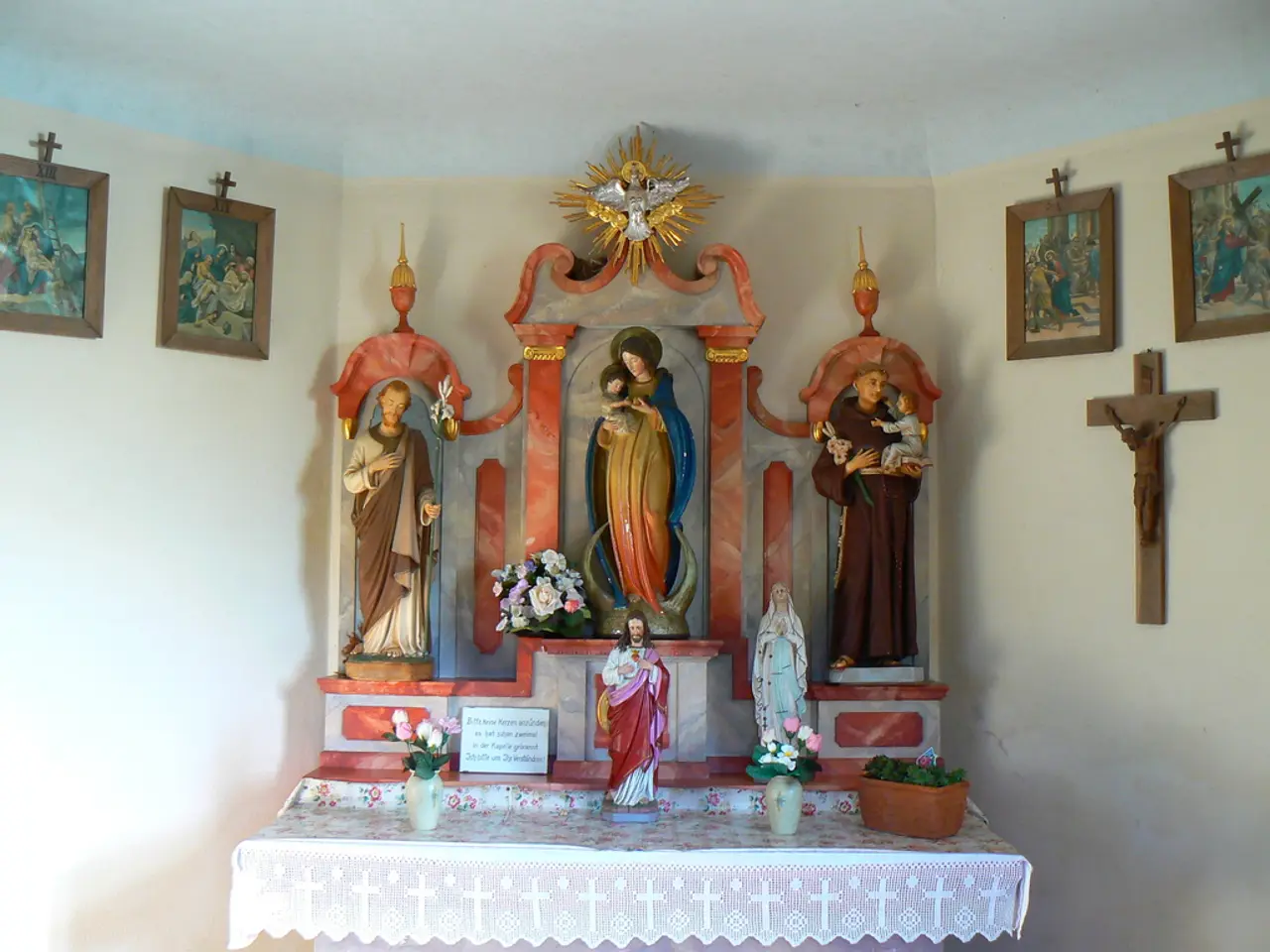Egypt's Ancestral Deity of the Afterlife and Netherworld: Anubis
In the rich tapestry of ancient Egyptian mythology, Anubis stands out as a central figure, known primarily as the god of embalming, mummification, and the protector of graves. This canine deity, depicted as a black jackal or a man with a jackal's head, played a crucial role in ensuring the successful journey of souls into the afterlife.
Anubis's influence was felt in both the physical and spiritual realms. He set the archetype for mummification and preservation of the body, an essential practice for enabling the soul's survival after death. As a psychopomp, he guided souls through the dangerous underworld (the Duat) to the Hall of Ma’at for judgment, ensuring their safe passage and protecting them from malevolent forces and traps.
The Weighing of the Heart ceremony was a significant part of Anubis's duties. In this religious final judgment, he oversaw the scales that measured the deceased’s heart against the feather of Ma’at, symbolizing truth and justice. This process determined whether souls could enter eternal paradise or face destruction.
Anubis's protective roles extended beyond the afterlife to the physical realm. He guarded tombs and cemeteries from raiders and evil spirits, and ensured that priests followed the many steps and spells found in the Book of the Dead during mummification rituals. He supervised these rituals, weighed hearts to determine if souls were worthy of eternal paradise, and performed the sacred duty of "He who is upon his sacred mountain", weighing hearts in the Hall of Truth to determine the fates of souls.
Artistic renderings often show Anubis with Osiris and the scribe god Thoth, conducting mummification rituals or weighing the hearts of the deceased to judge their worthiness for eternal paradise. Anubis's initial appearance on royal tomb walls dates back to the First Dynasty, but his origins likely predate these artistic renderings.
Visually, Anubis is depicted as a black jackal or a man with a jackal’s head, with the color black symbolizing both decay and rebirth, a duality pivotal to Egyptian views on death and renewal. Priests wore jackal masks embodying Anubis during mummification rituals, emphasizing his divine authority over the sacred processes of death and burial.
Anubis's significance is profound because he embodies the ancient Egyptians' deep respect for death, the sacred tradition of preserving the body, and the moral order that governed the journey to the afterlife. His benevolent and protective nature made him one of the most revered gods associated with death, justice, and transition from life to the afterlife.
| Role | Significance | |--------------------------|------------------------------------------------------------------| | God of embalming | Set the archetype for mummification and preservation of the body| | Protector of graves | Guarded tombs and cemeteries against desecration and evil spirits| | Psychopomp | Guided souls safely through the underworld (Duat) | | Weighing of the Heart | Oversaw the weighing scale for judging souls’ purity and truth | | Symbol of death and rebirth| Represented by jackal imagery and black color symbolism |
Anubis thus stands as a pivotal figure ensuring both the physical preservation of the dead and the spiritual justice required for a successful journey into the afterlife. His enduring legacy continues to captivate our imagination, offering a fascinating glimpse into the beliefs and practices of ancient Egyptian society.




